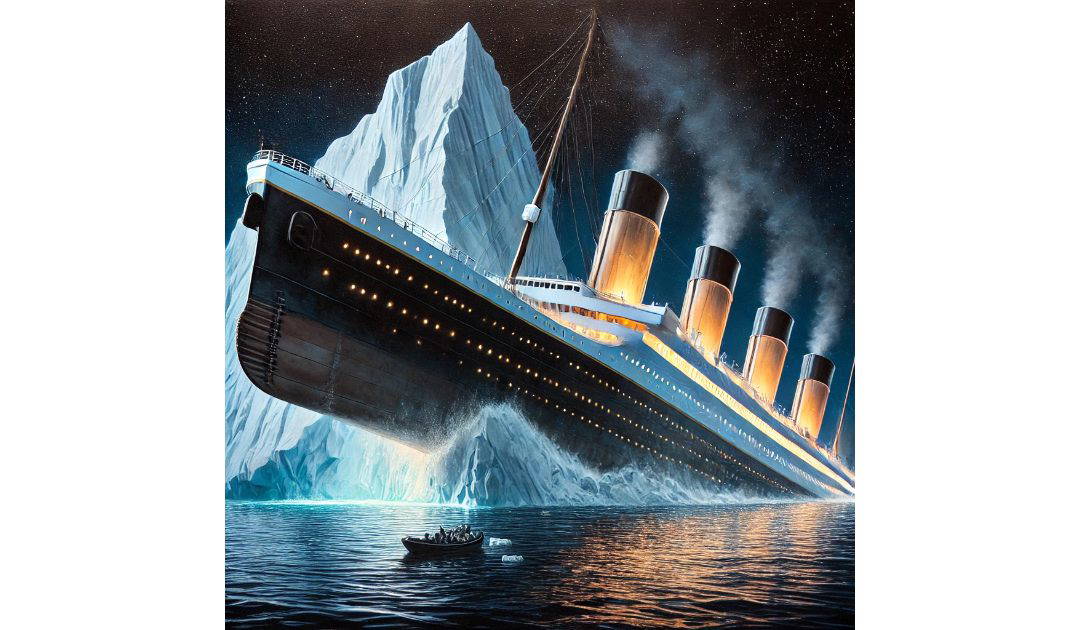On the 14th of April, 1912, RMS Titanic struck an iceberg. The Royal Mail Ship (RMS) Titanic remains one of history’s most iconic maritime tragedies. This British passenger liner, operated by the White Star Line, was the largest ship afloat at the time of her maiden voyage, yet her story is forever etched in history due to her catastrophic sinking on the 15th of April 1912.
The Titanic was part of a trio of Olympic-class liners, designed to be the most luxurious ships ever built. Constructed at the Harland and Wolff shipyard in Belfast, Northern Ireland, she was an engineering marvel of her time. Built under the guidance of chief designer Thomas Andrews, Titanic was equipped with advanced safety features and innovative designs. Her hull was divided into 16 compartments, with doors that could be closed remotely, a feature that led many to believe she was “unsinkable.”
Measuring about 269 meters long and weighing approximately 46,328 tons, the Titanic was a floating palace. She offered first-class passengers luxurious amenities akin to those in a grand hotel, including a swimming pool, a gymnasium, and exquisite dining areas. The opulence and comfort were unmatched, targeted at the wealthy elites of the early 20th century.
On the 10th of April 1912, the Titanic set sail from Southampton, England, heading towards New York City. This maiden voyage was filled with anticipation and excitement, with the ship carrying some of the world’s wealthiest individuals along with emigrants seeking a new life in America. The passenger list included famous names such as John Jacob Astor IV, Isidor Straus, and Benjamin Guggenheim.
Despite warnings of icebergs in the North Atlantic, the Titanic maintained a high speed, aiming to make headlines for the fastest crossing. This decision was partly driven by the competitive spirit of the White Star Line against its rivals like the Cunard Line.
On the fateful night of 14th of April 1912, the Titanic collided with an iceberg at around 11:40 PM. The impact caused the starboard side to buckle and allowed water to flood into five of the ship’s compartments. Despite her advanced design, the damage was fatal. The ship was doomed to sink, a fact realised by Thomas Andrews, who was aboard the ship.
As panic ensued, the crew began to evacuate passengers into lifeboats. Unfortunately, the Titanic was equipped with lifeboats for just half of the people on board due to outdated maritime safety regulations. Many lifeboats were launched half-filled due to the chaotic evacuation process.
As the stern raised skyward, the Titanic broke apart and disappeared beneath the icy waters at 2:20 AM on 15th of April 1912. Of the approximately 2,224 passengers and crew on board, more than 1,500 lost their lives, making it one of the deadliest commercial peacetime maritime disasters in history.
The sinking of the Titanic sent shockwaves around the world and led to significant changes in maritime laws. The disaster prompted the establishment of the International Convention for the Safety of Life at Sea (SOLAS) in 1914, which mandated sufficient lifeboats for all passengers, regular lifeboat drills, and 24-hour radio watch on ships.
The Titanic’s legacy continues to captivate generations, not only due to the scale of the disaster but also due to the stories of heroism and tragedy that emerged from that night. The ship’s wreckage was discovered more than 70 years later, in 1985, lying over 3,800 metres below the surface of the North Atlantic Ocean. This discovery reignited public interest and led to numerous explorations and documentaries.
Cultural representations, including James Cameron‘s 1997 film “Titanic”, have further cemented the ship’s story in popular culture. The film’s box office success and extensive research brought a new level of attention to the ship’s history.

